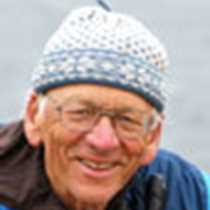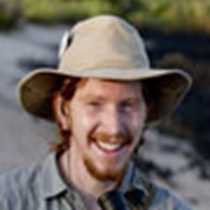During the night, we were anchored in a protected harbor along the north side of South Georgia. When early morning arrived, we looked outside to see waves, snow squalls, and a landscape of rugged, snow-dusted mountains—South Georgia in all of its quirky weather and glory. Before breakfast, staff boarded a Zodiac to check out conditions on a small island in the archipelago of Bay of Isles. Unfortunately, they found a large number of belligerent male Antarctic fur seals occupying much of the small beach where we had hoped to land. We left the beach to the fur seals and made alternate plans.
Only an hour away was Prince Olav Harbour, tucked inside Cook Bay and named for Norwegian nobility from the early 1800s. There sits the decaying remains of a sealing and whaling station. Due to safety restrictions imposed by the South Georgian government, a zone of 200m around the old station is off limits. However, from the decks of the ship, we could see the rusty remains of what had been a thriving commercial operation. Eventually, the operation dwindled due to overhunting, and fortunately, the whales and seals have outlived human exploitation. The animal populations have increased steadily; in some cases, the populations have essentially exploded.
We cruised by Zodiac along the shores of the bay. The weather in South Georgia can change at a moment’s notice—and it did—but even with the gusting wind, we were comfortable. One of the highlights of the morning was slowly cruising along the shore of a shallow inlet where we spotted dozens of male fur seals. The seals were jousting for the privilege to set up small territories in anticipation of attracting the females that were heading ashore first to give birth and then to mate again.
Once all the Zodiacs had returned to the ship, we had lunch as we began a short transit to our afternoon destination. Salisbury Plain is the second largest of the three main king penguin colonies in South Georgia. We anchored and headed ashore, but once again fur seals were on the beach and even some distance inland. Staff scouted a path inland on which we could safely make our way across the flat, grassy plain. Molting adult king penguins were scattered—in groups and as individuals—across the plain. Our specific destination was the base of some low tussock-covered ridges near the main group of penguins. Among the mass of birds were light brown, fluffy blobs with beaks and legs—Oakum Boys, as king penguin chicks are called.
For the rest of the afternoon, mind-blown guests took photos of the mass of penguins or just sat quietly, observing the colony. Through the afternoon, people trickled back to the landing beach. Some lingered there, watching a large group of penguins taking a bath just offshore. Shuttle Zodiacs had to slowly approach the beach to avoid disturbing the bird activity.
Later on, during Recap and into dinner, the ship cruised downwind of the strong, northwesterly winds to a safe anchorage for the night. What a spectacular and unique experience the day was. Many of us reminisced on the day’s amazing sights and sounds during and long after dinner.









